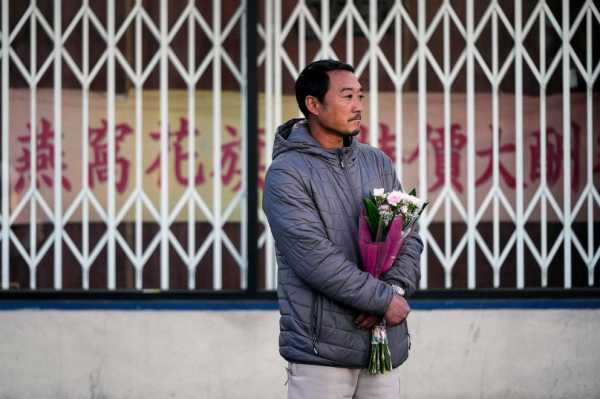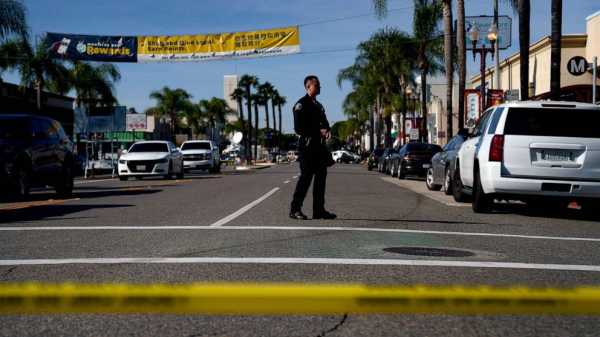Potentially more lives were saved Sunday when a man disarmed the alleged Monterey Park shooter after he had allegedly killed 11 people and wounded nine others at a nearby location.
Brandon Tsay told "Good Morning America" Monday that "something came over me" when he managed to wrestle the gun away from the alleged assailant in Alhambra, California, and forced him to leave.
It was reminiscent of the deadly Club Q shooting in Colorado Springs, Colorado, in November, during which two patrons tackled the shooter to the ground after killing five people and wounding 17 others, disarming him and holding him down until police arrived.
MORE: Monterey Park mass shooting live updates: 10 slain victims all in their 50s, 60s or 70s
But what possesses some people to charge in the face of danger?
Psychiatrists told ABC News part of this is due to the fight-or-flight response, which is a psychological reaction that occurs in response to an event that is stressful, frightening or life-threatening.

Hunter Zhao, 41, holds flowers to honor the victims killed in Saturday’s ballroom dance studio shooting in Monterey Park, Calif., Jan. 22, 2023.Jae C. Hong/AP
"Seeing somebody with a weapon and being certain that there is an immediate threat to one's life, we all have pretty much the same response," Dr. Emmanuel Maidenberg, a clinical professor of psychiatry at the University of California, Los Angeles, told ABC News. "It's an activation of the physiological system and it's one of the mechanisms that we all have built in that helps us to fight or escape from a danger. So, that's universal for all of us."
In response to this danger, the sympathetic nervous system – which regulates unconscious actions in the body — is activated, leading to a release of hormones, and preparing the body to either fight or flee.
"Once it's triggered, you get characteristic physical and emotional responses," Dr. Richard Friedman, a professor of clinical psychiatry and director of the Psychopharmacology Clinic at Weill Cornell Medicine in New York City, told ABC News.
"Your heart rate goes up, your blood pressure goes up, you pump out cortisol, the stress hormone, and epinephrine and norepinephrine — which is adrenaline and noradrenaline — rise and you're supercharged, and you are ready to either flee, to defend yourself, or fight if you're trapped, and you can't flee," he continued.
Friedman said a person can't know how they're going to respond in that situation, because it's a primal instinct.
However, if a person is confronted by a threat and does not have the capacity to run away – such as what appears to have happened with Tsay and the shooter — they are more likely to fight, experts said.
"If you're literally cornered, you're much more likely to defend yourself by attack than you are by fleeing and, under the influence of stress hormones, you're capable of tremendous acts of aggression and self-defense," he said. "People are capable of doing things that they're not aware of, in normal circumstances, when they're activated by the fight or flight response."
MORE: Asian American community shaken by Monterey Park mass shooting
Sometimes the occupation of the person that disarms a gunman can play role in their choice to do so. For example, in the Club Q shooting, it was a current U.S. Navy petty officer and a US. Army veteran who subdued the gunman.
"It's reasonable to assume because it's not a theoretical thing; it's practice," Friedman said. "So, if, let's say you have extensive experience in law enforcement or military service, in which you actually were in situations of danger, and responded, and so you had practiced it, you might be much more effective and much more likely to act in an effective way when confronted and surprised by a shooter."
"It's a learned response," Maidenberg said. "They've gone through a process of adding through a learning process, that behavioral response as available to them."
Although, this is not always the case. Friedman brought up the elementary school shooting in Uvalde, Texas, in May 2022, where students who survived waited for more than an hour before officers entered classrooms.
"The police did not go into the school, and were roundly criticized for not doing it," he said. "You wonder, were these police with less experience? Did they have very little actual real-life experience with disarming aggressive people?"
Being involved in a mass shooting — and especially being a person who disarmed the perpetrator — can be traumatic, but not everyone needs counseling, the experts said.

A member of law enforcement near the site of a deadly shooting, Jan. 22, 2023 in Monterey Park, Calif.Eric Thayer/Getty Images
Even though about 60% of men and 50% of women will experience at least one trauma their lifetime, not everyone develops post-traumatic stress disorder after.
In fact, only about 6% of the U.S. population will have PTSD at some point in their lives, according to the U.S. Department of Veteran Affairs.
Friedman said it's much more beneficial to tell a survivor some things they will experience over the next few days and to leave the option open to talk or seek counseling if they need, but not to push it.
"Forcing people to talk about it, what we've learned is, you can actually make traumatic events more upsetting and burn them in, by making people talk about it when they either don't want to or not ready to," he said. "The notion of universal debriefing, where people are aggressively encouraged to relive something, can actually be harmful and, although it's well intended, it's the wrong way to do it."
Sourse: abcnews.go.com






